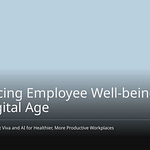Compliance in Microsoft 365 is very important. It helps protect sensitive data and keeps your organization safe. You can face big risks if you miss compliance blindspots. For example, wrong permissions can let people access data they shouldn’t. Also, insider threats can happen if tools like Co-Pilot are used incorrectly. Moreover, breaking compliance rules is a big problem in regulated industries. In these areas, following privacy laws is very important. Taking action early helps you find and fix these risks. This way, you can keep strong compliance.
Key Takeaways
Find compliance blindspots by using tools like Microsoft Graph APIs. These tools show details that regular dashboards often miss.
Use Microsoft Purview to gather compliance data in one place. This tool helps track data movement and automatically classify sensitive information.
Get ready for audits by knowing your Microsoft license agreements. Also, do internal audits. This helps avoid surprises during official checks.
Use strategies for continuous improvement. Regularly check compliance policies and use machine learning to find unusual activities.
Use multi-factor authentication to make security better. This extra step greatly lowers the risk of unauthorized access to sensitive data.
Compliance Blindspots
Risks of Standard Dashboards
Many organizations use standard dashboards in Microsoft 365 to check compliance. But these dashboards often show a narrow view of your compliance situation. If there is no clear ownership in Microsoft 365, it can lead to unmonitored access and old permissions. This can create security problems. When responsibilities are unclear, keeping up with compliance is hard. You could face fines and damage to your reputation if you do not fix these issues.
Also, standard reports usually give high-level summaries. They might miss important details, like steps to take and when to fix problems. Relying only on default settings can make you feel falsely secure. You might think you are compliant, but without deeper insights, you could miss big risks.
Hidden DLP Incidents
Data Loss Prevention (DLP) incidents can happen quietly and often go unnoticed. These hidden incidents can seriously threaten your compliance efforts. For example, you might not get alerts for some DLP violations, leaving sensitive data at risk. Regular checks help find compliance blindspots and focus on fixing them.
To manage DLP incidents well, think about using tools like the Microsoft 365 Data Security Check. This tool helps you find high-risk areas and gives a clear view of sensitive data exposure in Microsoft 365. By regularly checking your systems, you can discover hidden DLP incidents and take action.
Knowing these misconceptions can help you deal with compliance blindspots better. By taking action early, you can improve your compliance and lower risks.
Leveraging Microsoft Graph
Microsoft Graph has strong APIs that can help your compliance work a lot. By using these APIs, you can get detailed compliance data that regular Microsoft 365 tools often miss. This helps you find and fix compliance blindspots better.
Key APIs for Compliance
There are several Microsoft Graph APIs that are important for checking compliance in big companies. Here are some of the most used APIs:
eDiscovery: This API helps you manage legal and compliance needs. It makes eDiscovery workflows easier, so you can respond to legal requests faster.
Privacy Management: This API helps you handle requests about personal rights. It helps you follow privacy laws better.
Records Management: This API helps you manage records to meet legal rules. It helps you stay compliant with different regulations.
These APIs give you the tools you need to find hidden compliance problems and make your compliance work smoother.
Configuring Graph for Insights
To get the most insights from Microsoft Graph, you need to set it up correctly. Here are some good practices to follow:
Access Control: Make sure users have the right permissions to see the data they need. This stops unauthorized access and keeps data safe.
Error Handling: Set up strong error handling in your apps. For example, if a user doesn’t have access, show a simple “Access denied” message (HTTP error code 403). If something isn’t found, handle the 404 error nicely.
Throttling Management: Be ready for throttling responses by using a back-off plan. Use the Retry-After delay to manage requests well.
By following these good practices, you can make sure your use of Microsoft Graph is smart and helps find compliance blindspots.
Microsoft Purview as a Compliance Hub
Microsoft Purview is very important for managing compliance in your organization. It brings together compliance data by combining different tools from Microsoft into one place. This makes it easier for security and compliance teams to manage data workflows in Azure and Microsoft 365.
Centralizing Compliance Data
With Microsoft Purview, you can use machine learning to automatically classify sensitive information. This helps you find and protect confidential data better. Here are some key benefits of using Purview to centralize compliance data:
Automated Classification: Purview uses machine learning to classify sensitive information automatically.
Data Flow Tracking: It helps with compliance audits by tracking how data moves between systems.
Visibility Maintenance: Compliance officers can see everything happening in the organization, making sure all data is watched and managed well.
Also, Purview has a Data Map that helps you discover and track where your data comes from and how it moves. Centralizing policy management is easier too, so global teams can set and check compliance rules effectively.
Real-Time Monitoring
Real-time monitoring is another big benefit of using Microsoft Purview. It keeps track of data activity all the time, giving you insights that help you avoid possible violations. Here are some benefits of real-time monitoring:
Continuous Monitoring: You can watch data activity all the time.
Automated Alerts: Purview sends alerts for possible compliance violations, so you can act fast.
Visualization: It shows how data is classified, policy violations, risky data movement, and audit logs.
By using these features, you can change your compliance efforts from being reactive to proactive. This change helps you close compliance blindspots and builds trust in your organization.
Building a Proactive Compliance Strategy
Audit Readiness
Being ready for an audit is very important for your organization. It helps you show that you follow the rules when regulators check in. Here are some key steps to get ready for audits:
Know your Microsoft license agreements, including what they allow and limit.
Check cloud software licensing to make sure you are compliant.
Collect accurate data on software usage, including installations and user actions.
Do an internal audit to find compliance gaps before the official audit.
By doing these steps, you can create a strong base for being audit-ready. This proactive way helps you avoid surprises during real audits.
Continuous Improvement
Continuous improvement is key for keeping compliance in Microsoft 365. You should often review and improve your compliance policies and procedures. Here are some ways to boost your compliance efforts:
Machine Learning for Anomalous Activity: Use algorithms to find unusual patterns. This cuts down on manual checks and boosts data security.
Building Risk Indicators: Set specific risk indicators that trigger alerts for possible problems. Make these fit your organization’s needs.
Pre-Built Compliance Templates: Use templates that match industry standards. This makes your regulatory compliance work easier.
Multi-Factor Authentication: Add this extra security step to lower the chance of unauthorized access.
By focusing on continuous improvement, you can keep up with changing rules and new threats. Regular checks help you spot gaps and improve your compliance plans. This proactive attitude builds a culture of compliance in your organization, helping you stay ahead of possible risks.
In short, fixing compliance blindspots in Microsoft 365 is very important for your organization. You can use some key strategies:
Use Microsoft Graph APIs for clear compliance details.
Use Microsoft Purview to gather compliance data and watch activities in real-time.
Create a proactive compliance plan that focuses on being ready for audits and improving all the time.
By using these strategies, you make your compliance stronger and lower risks. Organizations that manage compliance well enjoy big benefits, like better policy compliance and lower costs. Remember, staying ahead of compliance issues not only keeps your data safe but also builds trust in your organization.
Use these strategies to make sure your compliance efforts are strong and work well.
FAQ
What are compliance blindspots in Microsoft 365?
Compliance blindspots are areas where your organization might miss compliance risks. These gaps can happen if you only use standard dashboards or overlook important data insights.
How can Microsoft Graph help with compliance?
Microsoft Graph has APIs that give you detailed compliance data. By using these APIs well, you can find hidden risks and make your compliance management better.
What is Microsoft Purview?
Microsoft Purview is a tool for managing compliance. It brings together compliance data in one place. It helps you track how data moves, classify sensitive information, and watch compliance in real-time.
Why is audit readiness important?
Being ready for an audit means you can show compliance during checks by regulators. Being prepared helps you avoid surprises and proves that you follow the necessary rules.
How can I improve my compliance strategy?
You can make your compliance strategy better by regularly reviewing your policies. Use machine learning to find unusual activity and add multi-factor authentication to boost security.















